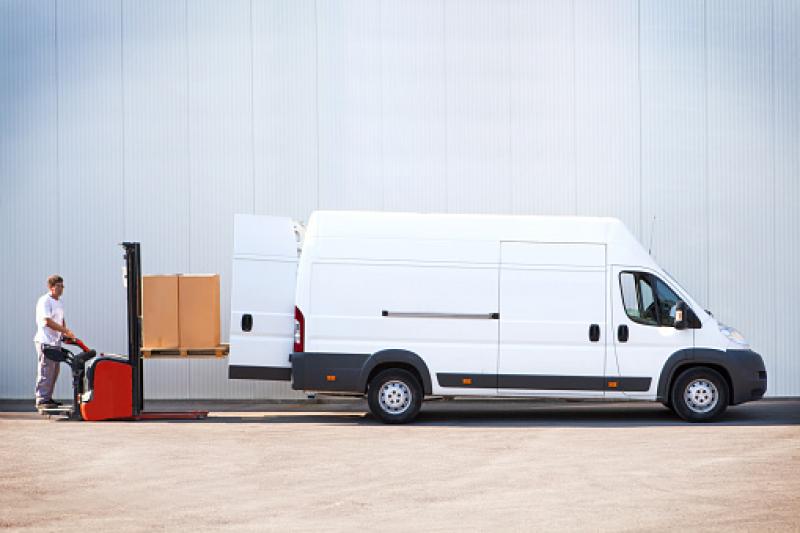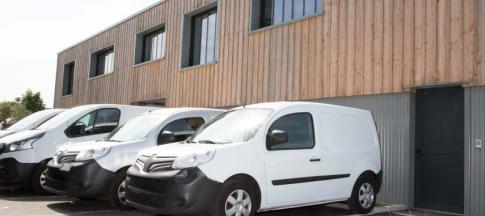
From supermarkets to takeaway meals, from Amazon to Evri, from DHL to DPD – all have become increasingly familiar on our streets.
This has led to a huge demand for drivers and ultimately vehicles to get these goods to our front door. Many drivers are self-employed and use their own van for their work.
Here are a few hints and tips for anyone about to embark on one of these roles who needs a van, wishes to improve their existing vehicle or wants to swap it for a nice new (or used) one.
Get the spec right
If you'll be spending 10 hours a day jumping in and out of your van maybe over 100 times, you really need to make sure you've covered all the bases.
Size
It's probably stating the obvious, but you'll need to know just how much volume you're going to need.
Daily runs will probably vary but you'll need something that will cope with a reasonable worst-case scenario.
Don't go too big though – the van will be less manoeuvrable and harder to park.
Too small? You might still get the parcels in, but you'll have no room to move them around, and finding an elusive package could be tricky.
Weight
Larger versions of the same van model have a lower payload. All that space in your new big van is just asking to be filled, but it's very easy to overload.
If you're likely to be regularly carrying heavy packages or parcels, then balancing volume and payload is a fine art.
You really need as much detail as possible from your operator/franchise as to the profile of the loads.
Doors
As you're accessing the more frequently than any other type of van operator, this is another aspect to get right.
A wide side loading door is a must (maybe think about a second side door?) and the rear doors should have heavy duty restraints.
Consider 270-degree opening doors which fold back to the van sides giving the greatest accessibility.
Engine
Fully electric vans used to be impractical, but they're becoming more viable for couriers – Amazon, for example, are rolling out electric vans for their delivery drivers.
Otherwise, you'll probably have to go with diesel. If you're operating in urban areas, you'll probably be wasting your money going for a high-powered version but beware choosing a low output motor.
Not only will the poor acceleration with a full load be tiresome, but they often use more fuel.
Gearbox
There's a reason that most supermarket delivery vans are fitted with automatic transmission – driver fatigue. Seriously consider going automatic if you can, especially when buying new.
Technology has improved so much that they're often more economical than the manual versions.
Driver tech and cab comfort
Although a standalone unit is fine, an integrated satnav is a real bonus to the courier and delivery driver.
Embedded into the van's multimedia screen, it'll make those hard to find drops a doddle, without obscuring the windscreen.
Also consider a high spec driver's seat and air conditioning.
Security
Although modern vans have a high level of security, high value loads may justify some additional hardware.
For the delivery driver who wants to avoid opportunistic thefts while his back is turned, secondary door locks that need the key to open but which slam shut may be worth considering.
Which is the best van for the job?
New or used, there's lots of choice out there. Here's a quick summary of models that might be on a parcel delivery driver's shortlist:
- Ford Transit: The 'Hoover' of vans. Lots of choice in body lengths, weights, roof heights and some really efficient engines. Lots on the used market too and an extensive dealer network for support.
- Mercedes-Benz Sprinter: A favourite with the courier, the Sprinter range – while not class leading in payload – has vans with more volume than most other van manufacturers. The dealer network mostly offers 24/7 servicing, so your van won't miss a day's work.
- Peugeot Boxer/Citroen Relay/Fiat Ducato: We've bundled these together as they're essentially the same van (though the Fiat has a different, arguably better engine). Although they don't offer the greatest load volume, they're clear winners in the payload stakes so if weight's your priority, they need careful consideration. Good value secondhand, too.
- Renault Master/Vauxhall Movano/Nissan NV400: Again, all very similar vans. Good payloads, roomy cabs and in the more recent ones some great twin turbo diesel engines. There's a five-year (mileage limited) warranty on the Nissan, too.
- Ford E-Transit/Citroen e-Dispatch/Fiat e-Ducato: If you're looking for an electric courier van, these three options could work well for you. With EV charging stations becoming so widespread, it's no longer an obstacle to find somewhere to charge up. These three models have solid ranges and cargo capacities so you can get around with ease, and allow you to lower your carbon footprint by switching fuel for electric.
Financing your van
New or used, there are a number of ways to fund that van. It's worth looking at options being offered by the dealer – typically these will be hire purchase or some sort of lease arrangement.
For new vans, talk to some brokers about leasing or contract hire. You'll need to think about whether you want to own the van at the end of the period or hand it back as if it had been rented.
Deposits differ wildly and your VAT status may have some bearing on what might be best for you.
Also, bear in mind that the lower the deposit, the higher you'll need to score on any credit search, especially if your business is new. Talk to your accountant for guidance.
I started my career selling vans in the mid-eighties, progressing through dealer groups to management level. In 2010 I joined vehicle valuation company CAP, being made responsible for forecasting future used values for all makes and models of vans and trucks, this data being used by leasing companies and manufacturers to assess future risk. This role entailed very early exposure to new models including extensive testing across Europe.
In 2016 I started up my own consultancy business dedicated to the LCV industry. In addition, my freelance written work has been used by a number of clients and I am a regular contributor to WhatVan? magazine. I’m also a judge for their annual ‘Van of the Year’ awards.
To relax, I enjoy travel and walking near my Yorkshire home.



